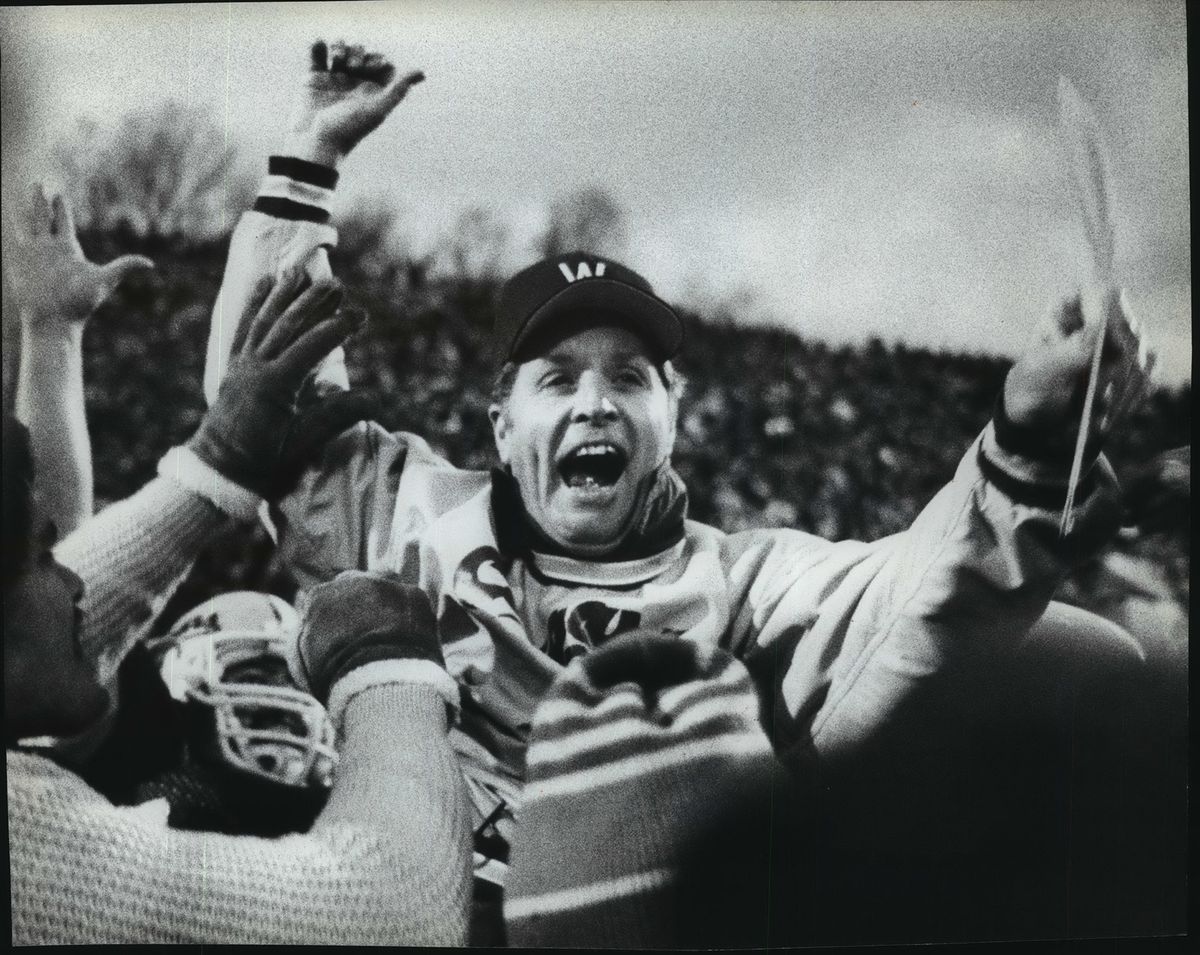‘Watch the drawwwww’: Jim Walden recalls Oregon fans groaning as Rueben Mayes ran into WSU football lore

The scene: Second half of a drizzly, offensive shootout football game at Autzen Stadium between Washington State and Oregon. Oct. 27, 1984.
Early in the fourth quarter of the Cougars’ win, WSU coach Jim Walden began hearing what he later described as “this moaning sound” every time his Cougars’ offense broke the huddle.
Moaning? Like, what, pain, mournful?
“Yeah, ‘Watch the drawwwww,’ ”
Walden stretched it out like a spooky Halloween ghost.
Many of the nearly 25,000 in attendance were harmonizing in an ominous message to Oregon coach Rich Brooks and the Ducks’ defense.
“Watch the drawwwww.”
By that point in the game, junior running back Rueben Mayes was well on his way to an NCAA single-game rushing record of 357 yards – many of them were gained on a common play called a “draw.”
It’s a fairly simple running play that starts out looking as if it will be a pass, convincing the linebackers to start dropping into coverage and the defensive line to surge upfield to rush the passer – only to be left out of position when the quarterback hands off to a back for a run up the gut. The play is most effective in obvious passing situations – far less so when the defense expects the run.
“We ran it and ran it and ran it. I kept thinking, I can’t run keep running this thing because even the crowd knows it’s coming, but every time we’d run it, we’d make 20 yards or whatever,” Walden said. “Honestly, we must have run it 25 times.”
At the time, Mayes didn’t even notice the offensive redundancy.
“I hadn’t really thought about what the actual play was, it just seemed to open up every time,” Mayes said. “Everyone was blocking well, and we just kept doing it and it kept opening up. I wasn’t getting hit until the second level.”
Mayes called himself “an instinctive runner,” and “having the ability to have a little space to anticipate a hole has been my value-add as a running back. I could kind of pick and choose where to go.”
Brooks didn’t think the Cougars’ scheme was a problem for the Ducks as much as their unexpected spate of missed tackles. The previous week, the Oregon defense played extraordinarily well in a 17-10 loss to the No. 1-ranked and undefeated Washington Huskies, holding them to 109 yards of total offense.
But on this day, Mayes, alone, picked up 156 yards rushing in just the second quarter.
Because the Cougars’ defense and special teams struggled, “I had to keep (Mayes) in the game until it was over,” Walden said.
Walden said, much later, he joked with Brooks about a game in which he had a back run for more than 350 yards and still had to hang on for a 50-41 win.
Brooks was not as interested in joking immediately after the game.
“Brooks was furious,” Walden recalled in a recent phone interview. “Absolutely furious. He’s mad at his defensive people because even the fans were telling what the play was gonna be, and they still couldn’t stop it.”
Walden was a little mystified by the success of what had turned into a one-dimensional offense, too, but a coach has to stick with what is working.
“Bless his heart, he was embarrassed,” Walden said of Brooks after the game. “His team scores 41 points and loses and then he has to live with what he knew was coming next … the very first question from the media was going to be, ‘Wasn’t there any chance you could stop that draw play?’ ”
So, coach Walden, do you remember what Brooks said to you after the game?
“It’s almost comical, now,” Walden said. “He asked me, ‘Is that the only … play you got in your offense?’ ”